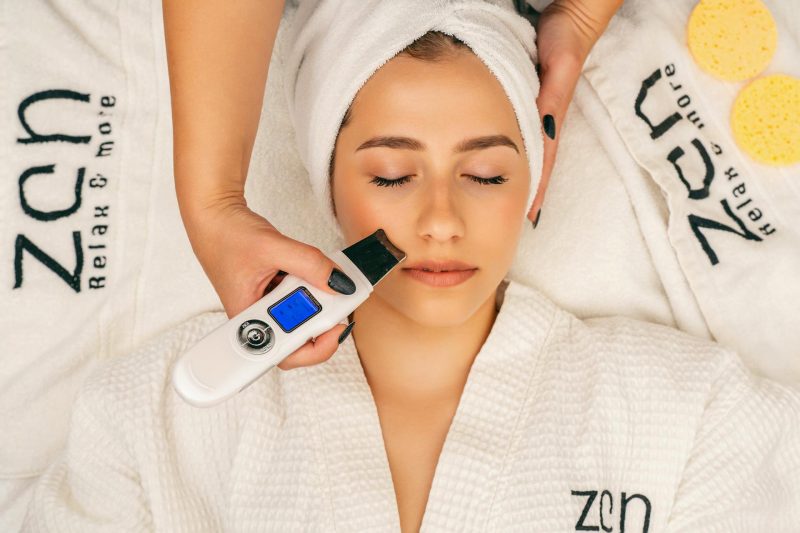Microneedling can work wonders when performed in the hands of trained dermatologists and skincare specialists. But when it’s used in at-home treatments or by those lacking expertise, side effects can be devastating. These include bacterial infections, scars, enlarged pores, track marks and an expedited ageing process.
The stories of microneedling gone wrong are a cautionary tale for anyone considering this treatment. Understanding what can go wrong with microneedling will help you avoid these pitfalls.
1. Choosing the Wrong Device
As a cosmetic treatment, microneedling can deliver a wide range of skin benefits, including reducing pockmarks and scars from acne, smoothing out the skin’s texture, evening out the tone and improving the appearance of wrinkles. However, like any other cosmetic procedure, it’s important to choose a qualified professional who knows how to do the job correctly. This is especially true for microneedling, since it’s a relatively new technique that uses needles to create micro-injuries in the skin. Incorrect use can cause a variety of problems, including infection and uneven skin tone. To avoid these problems, read on to learn about the biggest mistake in choosing bad microneedling and how you can avoid it.
First, the treatment must be performed by a licensed esthetician with specialized training in microneedling. It’s also best to choose a practitioner who has experience treating patients with various skin conditions. These professionals can better understand your skin’s condition and customize the treatment to fit your needs.
In addition, you should only undergo microneedling in a sterile clinic. The needles may reach nerves and blood vessels, making cross-contamination a serious concern. Additionally, even shallow punctures can trigger an inflammatory response and introduce active serums to depths they’re not designed to reach.
Finally, you should avoid exfoliation products before your microneedling session. Exfoliation can irritate your skin, leading to redness and swelling. Additionally, it can disrupt the skin’s protective barrier and lead to premature aging.
Another important thing to keep in mind is to protect your skin from the sun after microneedling, says san ramon microneedling. The treatment can make your skin more sensitive to sunlight, so it’s important to wear a broad-spectrum sunscreen with SPF 30 or higher.
When it comes to choosing the right device for your microneedling treatment, you should also pay attention to the length of the needles. Depending on your skin’s condition, you may need a different needle length than someone else. For example, if you have acne scars, you might need shorter needles than if you’re looking to reduce fine lines and wrinkles. If you’re not sure what your skin type needs, speak with a dermatologist for a consultation.
2. Choosing the Wrong Needle Length
While microneedling can work wonders under the hands of dermatologists and experienced skincare specialists, it’s a different story when it enters the realm of at-home treatments or is performed by inexperienced practitioners. In these cases, microneedling can lead to a plethora of undesirable side effects like scars and infections, track marks, enlarged pores, permanent indentations, skin discolouration, systemic hypersensitivity, and even tumour formation.
Moreover, choosing the wrong needle length is a big problem as well. Incorrect needle length can result in wrong delivery and failure of efficacy as a consequence. This is because the injections may not penetrate deep enough or strike a bone or nerve, which can lead to serious consequences.
To avoid this, always choose the right needle length for your specific needs. This is especially important when you’re getting a device with interchangeable dermaroller heads as each head has different needle lengths that cater to various skin concerns and needs. For example, you can use a 0.5mm dermaroller for reducing fine lines and wrinkles, fading dark spots, reducing acne scars, improving skin texture, and increasing absorption of skincare products. You can also opt for a 1.5mm or 2mm dermaroller to address deeper scars, such as pitted and linear scars.
In addition to choosing the right needle length, it’s also vital to protect your skin properly after a microneedling session. This means avoiding sun exposure and applying a broad-spectrum sunscreen with at least SPF 30 and reapplying it often.
As you can see, while microneedling is one of the most effective non-invasive procedures for reducing fine lines and wrinkles, it’s a little riskier than other skincare treatments and should only be administered by professionals who know what they’re doing. By arming yourself with knowledge, ensuring that you’re dealing with reputable practitioners, and keeping your expectations realistic, you can enjoy the benefits of this wonderful treatment without worrying about its drawbacks. That being said, good luck on your microneedling journey! If you have any questions, feel free to contact us! We’d be happy to help.
3. Choosing the Wrong Skin Care Products
In the era of show-and-tell Instagram beauty, microneedling has been a hot treatment for many people with a variety of skin concerns. It’s been shown to decrease the appearance of fine lines, acne scars and uneven skin texture. And while sticking a bunch of needles into your face sounds a little scary, it’s actually very safe when performed by a trained expert.
Also known as derma rolling or collagen induction therapy, the process involves puncturing the skin with thousands of tiny needles to trigger your body’s healing response. The trauma of the needle pricks helps to stimulate the production of collagen, which is what gives your skin that firm, tight, youthful look. Collagen levels decline with age and can also be reduced due to injuries, resulting in sagging skin.
Microneedling is considered minimally invasive and is usually performed in a dermatologist’s office or by an esthetician who has been specially trained. The process can be paired with other treatments such as radiofrequency or platelet-rich plasma to maximize results. Although microneedling is generally safe for most adults, it’s not recommended for those with a history of keloid scars, scleroderma, or fungal infections. It’s also not advised for pregnant women or those who are immunosuppressed.
During the procedure, a numbing cream will be applied to your face so you can’t feel the needle pricks. Then the person performing the procedure will move a pen-shaped device with tiny needles around your face. This will create tiny injuries to your skin, and the body’s wound-healing processes will send collagen and elastin to patch them up.
It’s important to avoid using home microneedling devices that use energy or heat. The added heat can cause burns and damage the delicate skin tissue. Home devices may also have shorter, more blunt needles that are less effective than those used by dermatologists and other medical skin professionals.
In order to achieve the best results from microneedling, it’s important to choose a skin care routine that supports your new collagen production. In addition to a cleansers and moisturizers, I recommend adding products with hyaluronic acid or other growth factors that help boost the skin’s ability to heal itself. This will help ensure that the small wounds created by the needles are effectively healed, and your results will last longer.
4. Choosing the Wrong Therapist

Microneedling has become an extremely popular skin treatment for its amazing results, reversing signs of ageing, improving elasticity, and addressing a range of aesthetic concerns like acne marks, uneven tone, rough texture and more. However, it is important to exercise caution when opting for this treatment at home or with an inexperienced practitioner as there are hidden dangers lurking behind the curtain that can undermine your results and lead to unwanted side effects.
This procedure involves the use of fine needles to create microscopic wounds on your skin. This triggers a healing response and stimulates collagen production, thereby firming up the skin. It is particularly effective in treating rolling and boxcar scars, but less so for ice-pick and hypertrophic scars. It is also a good alternative to surgery for treating wrinkles and fine lines.
When done incorrectly, microneedling can cause damage to your internal skin scaffolding and lead to permanent loss of elasticity and plumpness. It can also leave your skin with a scaly orange-peel texture and result in increased oil production. These effects are caused by your body interpreting micro-wounds as a form of trauma.
These issues can be avoided by doing thorough research into your practitioner’s qualifications and experience. Look for testimonials and reviews from past clients, and choose a professional who is certified to carry out the procedure. Also, ensure that they use clean equipment and follow hygienic procedures to avoid infection and other potential problems.
Another mistake people often make is overdoing their treatments, which can lead to redness and sensitivity. You can also undo your hard work and cause unnecessary damage by exposing your skin to the sun after the session, so be sure to apply a broad-spectrum sunscreen with SPF 30 or higher.
Microneedling can be a safe, effective and minimally invasive option for those looking to improve their complexion. It can be very beneficial for those with Fitzpatrick’s IV and V skin types. It is a great treatment for improving skin texture, reducing the appearance of fine lines and wrinkles and treating various skin conditions like scarring and uneven pigmentation.







